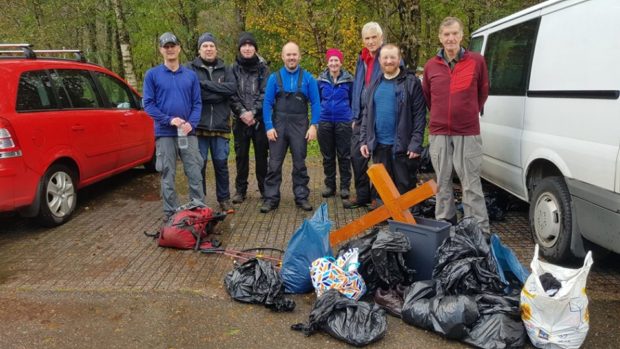Hundreds of pounds of rubbish, including sandwich wrappers, fruit skins, plastic bottles and sushi containers, was collected from the top of 22 of Scotland’s busiest mountain peaks this weekend.
The seventh annual Real Three Peaks Challenge on Saturday tasked dozens of volunteers all across Scotland and the rest of the UK with cleaning up their nearest hill.
Since the project started in 2013, more than 1.1 tonnes of discarded plastic, cigarettes and other detritus has been retrieved from the summit of Ben Nevis alone.
Over the years, the scheme has expanded from just the original three peaks of Ben Nevis, Scafell Pike and Snowdon to more than 30 mountains throughout the UK.
Some of the other popular Scottish hills and walks which were cleaned up this year included Bennachie, Lochnagar and Broad Cairn in the north-east, Ben MacDui in the Cairngorms and the Fairy Pools in Skye.
The yearly litter picks always takes place on the second Saturday of October, and are designed to rid the country’s summits of rubbish after the busy summer season and before the heavy snow of winter sweeps across the country.
Rich Pyne from Kinlochleven, the founder of the project, spent Saturday up Ben Nevis getting his hands dirty and picking up discarded items such as cigarette ends, dog poo bags and tampons from the plateau of Britain’s highest mountain.
He and the team also recovered a wooden crucifix which had been put in place on the mountain, which is not permitted.
Mr Pyne said: “Banana skins, orange peels, pistachio shells, tampons, sandwich wrappers, plastic bottles, tinfoil, chewing gum and fag ends are probably the bulk of what we are taking down.
“After so many years now, we’re getting better and better at identifying all the little hidey-holes that people leave their rubbish, go to the toilet or dump all their charity stuff they don’t want to take back down.
“It has been great watching the project grow and grow, and I am so thankful for everybody joining in across the country.
“Eventually, I’m wanting to expand beyond just hills and mountains to local paths and beauty spots, and try to get as many people involved as we can.”
